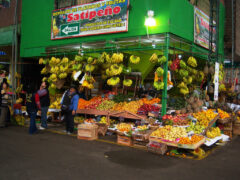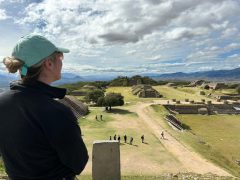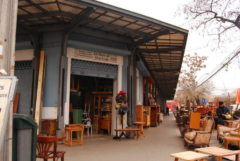Hikes to and Around Machu Picchu – A Brief Guide

Even though it is now possible to do a whirlwind visit by train to the ruins, the Inca Trail remains exceptionally popular with visitors hoping to follow in the footsteps of Hiram Bingham and the Incas before him. The Inca Trail isn’t the only way to trek to Machu Picchu though, with the Incan cobblestone trails spreading far and wide.
In this blog, we’ll take you through what hiking the Inca Trail involves, as well as some of the alternative routes here, shorter nearby hikes and a set of alternative nearby Incan ruins with their own intrepid trek.
THE Inca Trail – The classic Machu Picchu hike
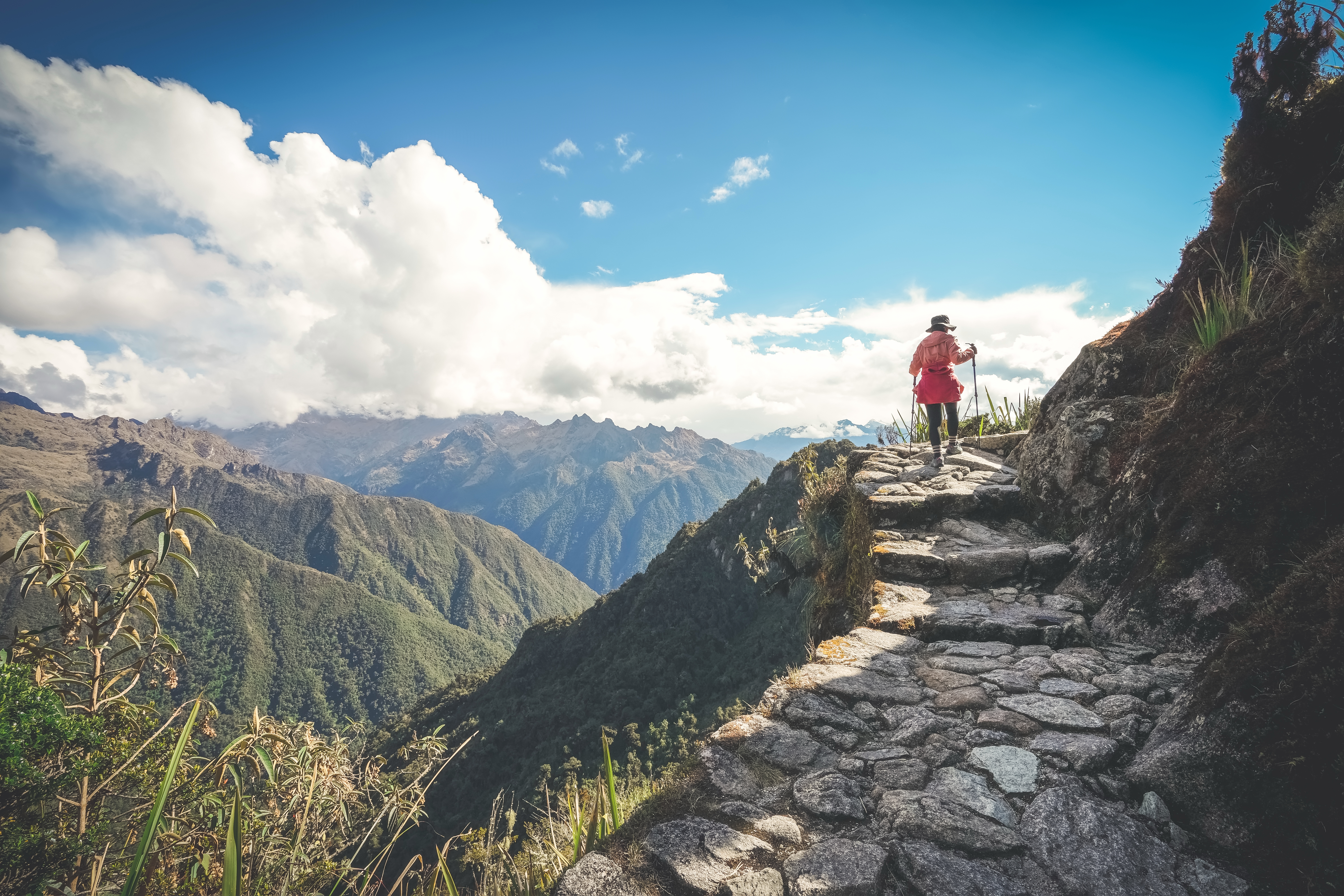
If Machu Picchu is the most iconic landmark in Latin America, the Inca Trail is the most iconic hike. It’s a four-day adventure that begins on the banks of the Urubamba River, snaking through the cloud forest and going up to 4,200 metres above sea level, past a variety of Incan ruins before reaching the piece de resistance.
What the Inca Trail involves:
Starting at the bridge over the Rio Urubamba, a two-hour journey from Cusco, your first day involves a gentle climb following the river until you reach your first Incan ruin, Llactapata. It is believed that it was used as a rest stop by Incan travellers, so it’s fitting that you’ll take a break from hiking to appreciate it before continuing to that night’s campsite – the hamlet of Huayllabamba. There’s a small shop here, as well as a football field if you’re feeling up for a game with the locals.

The second day is a little less eventful, with no ruins and the scenery changing from open views of the Andes to mossy cloud forest all around. As if to compensate, the next day is filled with ruins from start to finish: the circular house of Runkuracay, the mountain-view ruins of Sayacmarka, tunnels constructed by the Incas, the terraces of Phuyupatamarca and the complex of Wiñay Wayna. Among these last ruins you’ll camp for the night, with a gorgeous view of the Urubamba valley.
If you’re starting to feel out of breath, the last day is an easy one – and, when the climax comes, the past three days will have felt worth it. Inti Punku (the Sun Gate) may look down on Machu Picchu, but the walk there from Wiñay Wayna is an easy two-hour walk on mainly level terrain. It’s common to do it before the sun rises, such is the payoff when you see the sun’s rays slowly illuminating Machu Picchu. An hour later, and you’ll be in the citadel before the day-trippers from Cusco have arrived.
Things to know
- Accommodation is entirely in campsites – unlike similar treks elsewhere in the Cusco region, there are no lodges along the Inca Trail.
- Permits are required and sell out quickly between May and August. Hiking the Inca Trail independently is not possible.
- December to March is the rainy season and the trail closes in February. While this is certainly not the best time to do the trail, it can have its benefits: some staff from Journey Latin America did it in January once, and in addition to dry weather, there was almost nobody else present.
- Porters are generally provided to help carry your gear. While a minimum wage has been put in place, some companies deduct tips from this or even ignore this regulation altogether. All of Journey Latin America’s partners have been vetted.
Featured holiday: Active Peru: Cycling, Rafting and the Inca Trail
The One-Day Inca Trail
This shortcut trail starts at km 104, a railway stop before Aguas Calientes with little more than a sign to mark the entrance. From here, a steep climb takes you to Wiñay Wayna, from which you follow the regular Inca Trail, past the Sun Gate and to Machu Picchu itself. Although this trek misses out on many of the smaller ruins, you’ll still see Wiñay Wayna and get the experience of Machu Picchu unfolding beneath you as you reach the Sun Gate.
Salkantay Trek – an alternative hike to Machu Picchu
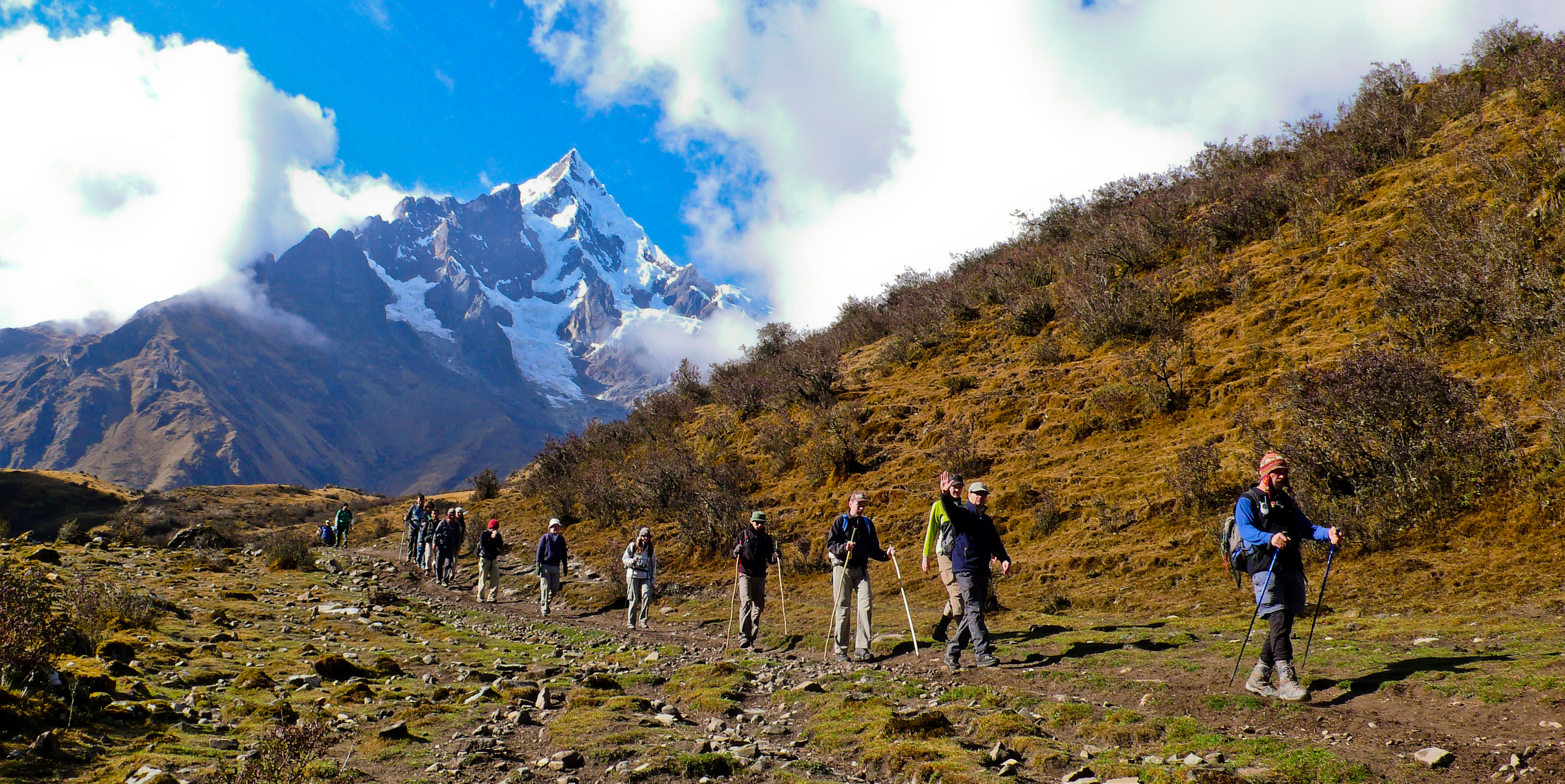
Described by National Geographic as one of the most spectacular treks in the world and raved highly about by many travellers, describing it as an alternative Inca Trail almost doesn’t do it justice. Nevertheless, with Machu Picchu sitting at the end, this trail attracts many people seeking to explore the Andes before arriving at the ruins. It is said that pious Incas preferred to trek this route to Machu Picchu since its higher elevation would bring them closer to the gods.
The Salkantay Trek itself is a more adventurous undertaking than the Inca Trail, but also offers more chances to rest and recuperate along the way. It reaches a higher altitude and covers a longer distance, evidenced by the up-close views of snowcapped Andean peaks one gets along the way. Unlike the Inca Trail, though, it’s possible to do the Salkantay Trek entirely from lodges, some of which come with wine dinners and Jacuzzis. Plus, there is a collection of hot springs at Cocamayo where you can rest your weary feet. You can also do the whole thing via horseback.
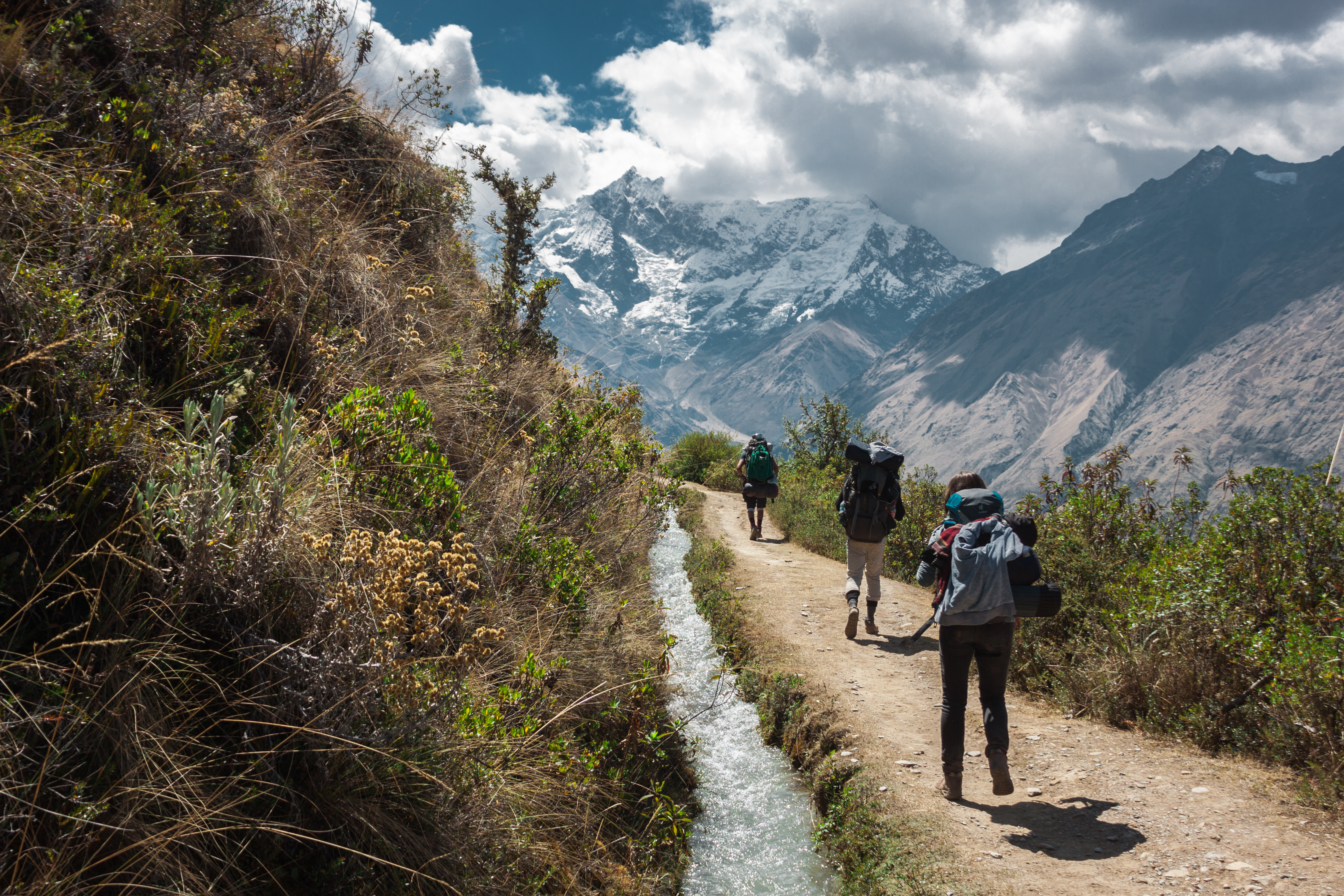
The trail starts to the south of Machu Picchu in the hamlet of Soraypampa, snaking its way north-west around the namesake Salkantay mountain. Your first day actually begins with a side trip to the turquoise Lago Humantay, whose picturesque location beneath the snow-sprinkled cliffs more than excuses the need to double back to the main trail.
Once you’re back on the main trail, it’s time to start heading north, through the equally scenic Salkantay Pass. This is also the highest point of the trek, so guides will typically take a minute to say a few prayers for luck before you continue on to the next rest stop. The following day, the scenery changes from altiplano to cloud forest, where hummingbirds zip between orchids and bromeliads corral tree branches. You’ll also have the opportunity to tour a coffee plantation in one of the local villages. It’s like this on the third day too, when the trail starts to veer eastwards, back towards Machu Picchu.
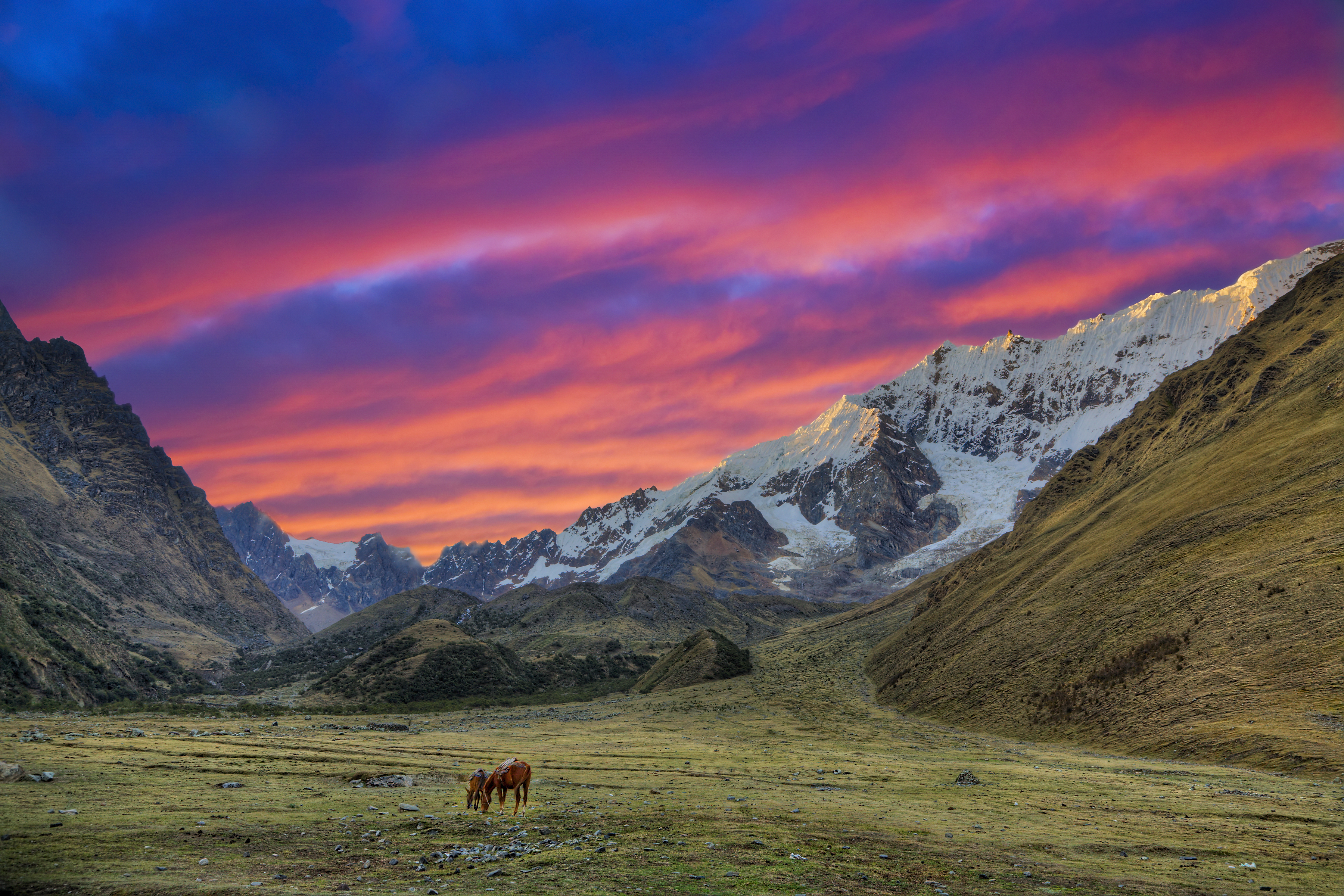
The campsite/ accommodation on the fourth night is particularly noteworthy since it not only sits amid some low-level Incan ruins, but also grants you a view of Machu Picchu. It’s a side-on view, so you’ll see the citadel sitting along the spine of the ridge with the peaks to the side rather than behind it, but it’s at this point that you’ll realise how close you are to the end.
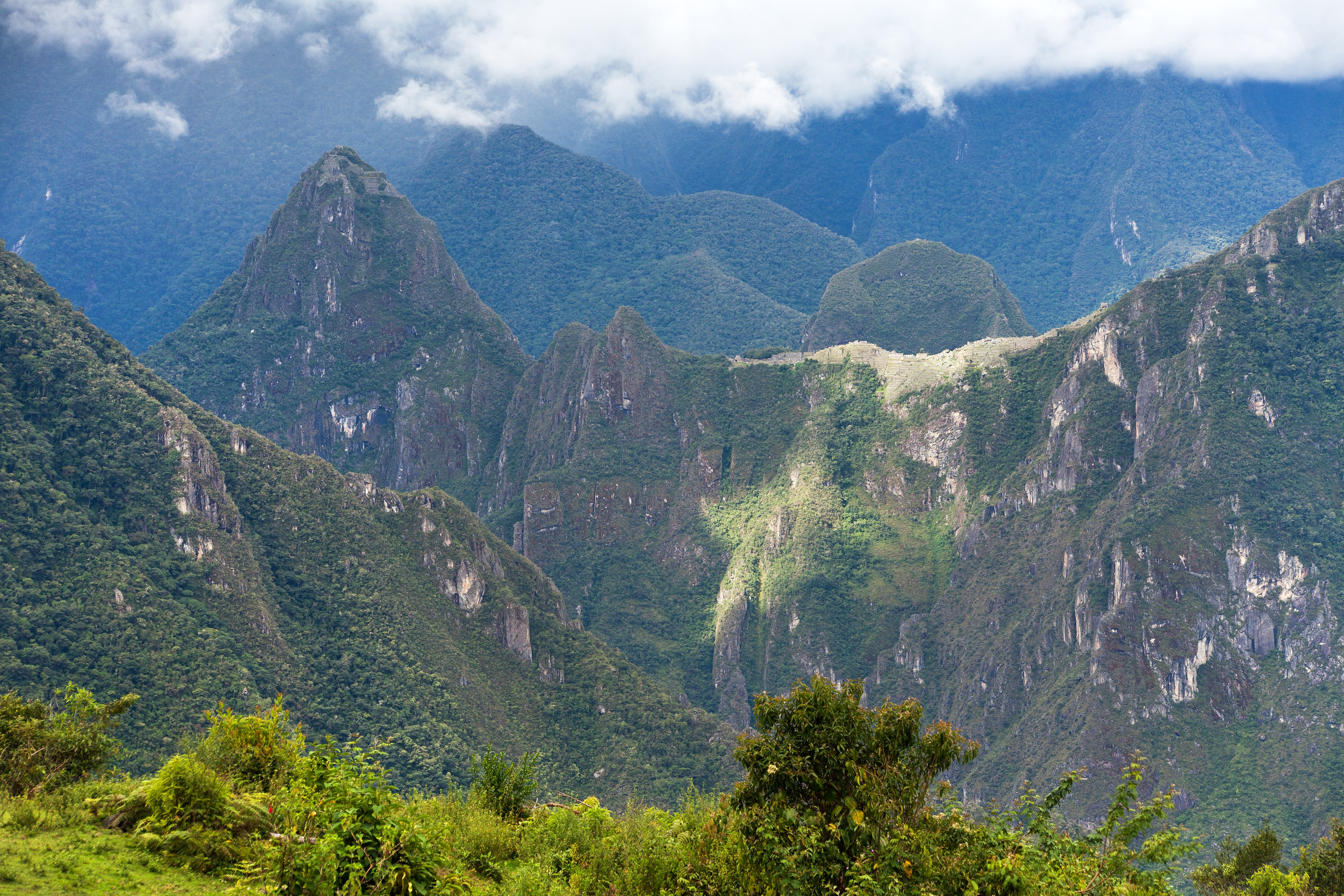
The last day of hiking involves a descent to the Aguas Calientes hydroelectric dam, from which you walk alongside the railway line to the town itself. The evening is spent enjoying all the creature comforts you’ve been missing while up in the Sierra, before heading up to Machu Picchu itself the next morning.
Featured holiday: Active Peru and Bolivia
Huayna Picchu and Machu Picchu Mountain

The two peaks between which the citadel is nestled, Huayna Picchu and Machu Picchu mountain, have trails leading to their summits that allow you to (almost) get a birds-eye-view of Machu Picchu and the surrounding mountains.
It may surprise you to learn that the ruins were named after Machu Picchu mountain rather than the other way around. The citadel’s original name was never actually uncovered since the Incas had no system of writing. Hiram Bingham who “discovered” the ruins in 1911 after a tip-off from some locals had heard them calling it Machu Picchu, meaning “old mountain” in Quechua, and thus the name stuck.
Getting to either involves passing through the ruins themselves first, and then ascending. Both hikes offer excellent views of the ruins, and they’re both quite popular. We’ve written an in-depth article on whether to hike Machu Picchu or Huayna Picchu.
Choquequirao Trek – an alternative to Machu Picchu altogether
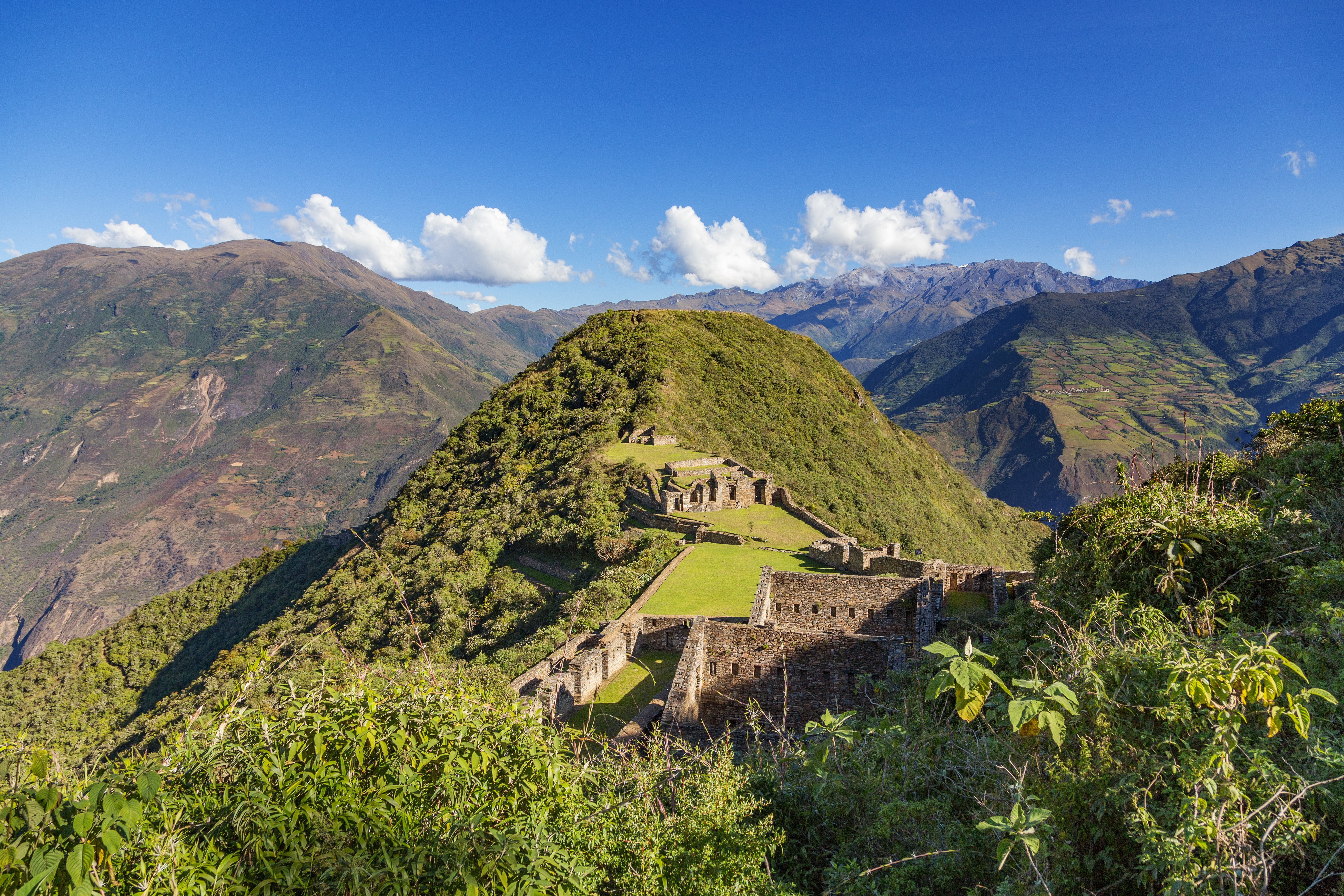
Dubbed the mini-Machu Picchu, Choquequirao presents a quieter alternative to its more famous cousin. While the ruins consist of a more modest collection of stone houses and terraces, the scenery is still just as dramatic and the visitor numbers are a fraction of Machu Picchu’s.
One of the main reasons for this is that hiking is still the only way to get there. Plans for a cable car that would connect the complex to a nearby highway, making a day trip from Cusco feasible, have been lodged. At the time of writing they’ve been on hold indefinitely, but not completely shelved – be sure to book soon while the isolation lasts!
A 4-5 day round-trip from Cusco, this trek is a tough one. Unlike the Inca Trail and Salkantay Trek, the Choquequirao Trek has no easy on-the-flat days. The route is nice and simple to describe: separating the ruins from the nearest road is a steep canyon. Day one is spent descending to the bottom, while day two is spent ascending to the top, where a cluster of lodges and campsites awaits. You can then spend a day resting a bit and appreciating the ruins (which we’d definitely recommend) before going back the way you came.
Other hikes near Machu Picchu and Cusco
Given its location in the Andes, it should come as no surprise that the Cusco area comes with plenty of treks which, while they don’t pass near Machu Picchu, can easily be combined with the famous ruins.
- Huchuy Qosqo Trek: The Huchuy Qosqo ruins are a small set of terraces and ruins nestled in the hills to the north. Doable as a day trip from Cusco, it’s rather fitting that their name in Quechua means “Little Cusco”.
- Lares Trek: Beginning in the town of Lares and ending in Ollantaytambo (from which you can catch a train to Machu Picchu), the Lares trek is known for the cultural experience it offers. Lining the trail are various villages where life has remained unchanged since the Incan days. Many call it the Weavers Trail for the colourful ponchos locals make.
- Ausangate Trek: This trek isn’t dissimilar to those of Nepal: not only is the scenery practically identical, but the route takes you from one local community to another, bedding down in comfortable lodges each night. Save for a section that takes you to the famous Rainbow Mountain, your chances of encountering more than a handful of tourists out here are slim.
Tailor-made holidays
Flexible, custom-made holidays to Latin America created to match your exact requirements: our tailor-made itineraries are as unique as the clients for whom they are designed.
Design my tripPapagaio
Your edit for Latin American inspiration
Our exciting range of articles on Latin America explore everything from iconic destinations and lesser-known cultural gems to delicious traditional recipes. You’ll also find exclusive travel tips, first-hand client reviews and the chance to get your personal questions answered by our travel experts.
View Extraordinary Inspiration
